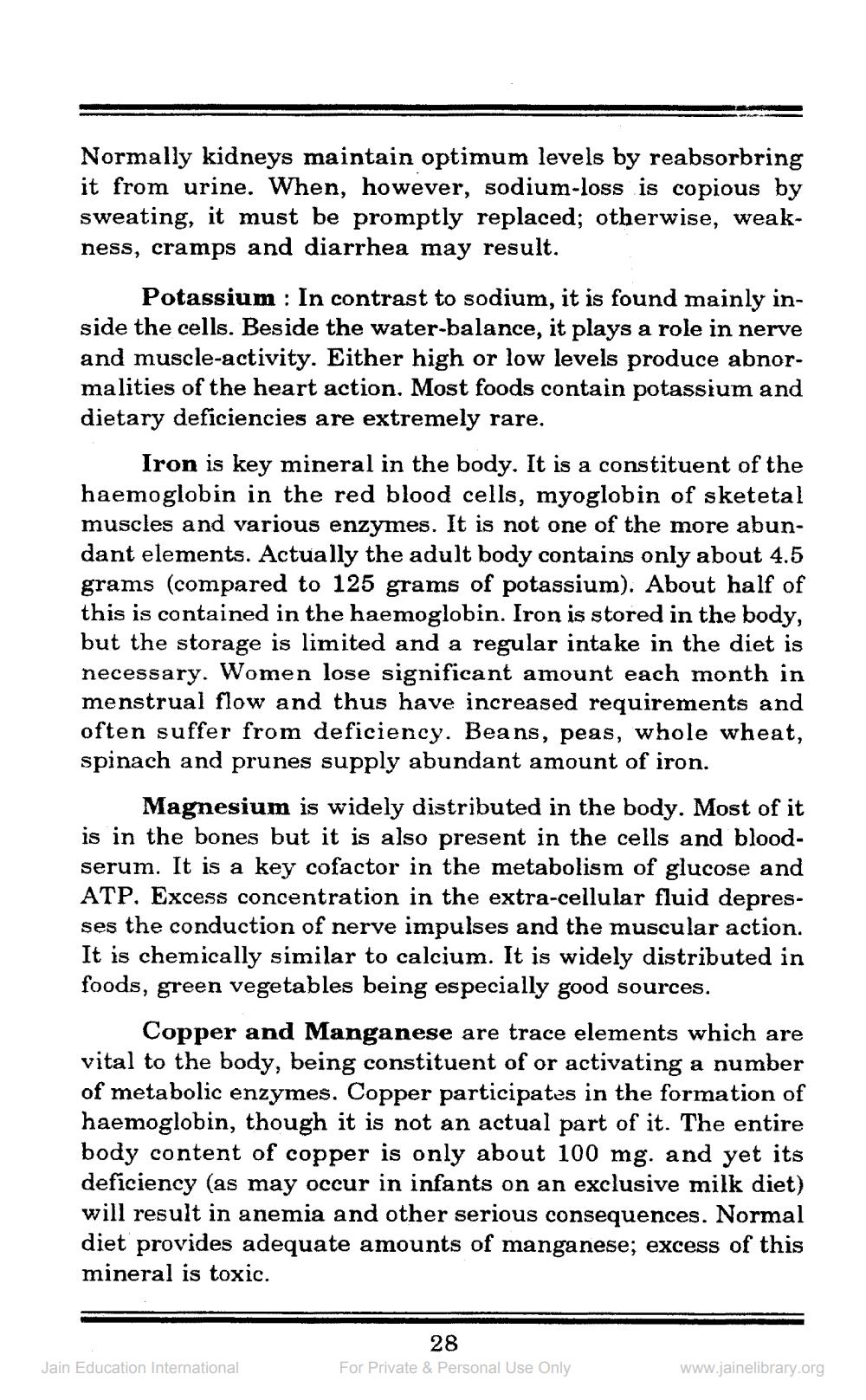________________
Normally kidneys maintain optimum levels by reabsorbring it from urine. When, however, sodium-loss is copious by sweating, it must be promptly replaced; otherwise, weakness, cramps and diarrhea may result.
Potassium : In contrast to sodium, it is found mainly inside the cells. Beside the water-balance, it plays a role in nerve and muscle-activity. Either high or low levels produce abnormalities of the heart action. Most foods contain potassium and dietary deficiencies are extremely rare.
Iron is key mineral in the body. It is a constituent of the haemoglobin in the red blood cells, myoglobin of sketetal muscles and various enzymes. It is not one of the more abundant elements. Actually the adult body contains only about 4.5 grams (compared to 125 grams of potassium). About half of this is contained in the haemoglobin. Iron is stored in the body, but the storage is limited and a regular intake in the diet is necessary. Women lose significant amount each month in menstrual flow and thus have increased requirements and often suffer from deficiency. Beans, peas, whole wheat, spinach and prunes supply abundant amount of iron.
Magnesium is widely distributed in the body. Most of it is in the bones but it is also present in the cells and bloodserum. It is a key cofactor in the metabolism of glucose and ATP. Excess concentration in the extra-cellular fluid depresses the conduction of nerve impulses and the muscular action. It is chemically similar to calcium. It is widely distributed in foods, green vegetables being especially good sources.
Copper and Manganese are trace elements which are vital to the body, being constituent of or activating a number of metabolic enzymes. Copper participates in the formation of haemoglobin, though it is not an actual part of it. The entire body content of copper is only about 100 mg. and yet its deficiency (as may occur in infants on an exclusive milk diet) will result in anemia and other serious consequences. Normal diet provides adequate amounts of manganese; excess of this mineral is toxic.
28 For Private & Personal Use Only
Jain Education International
www.jainelibrary.org




